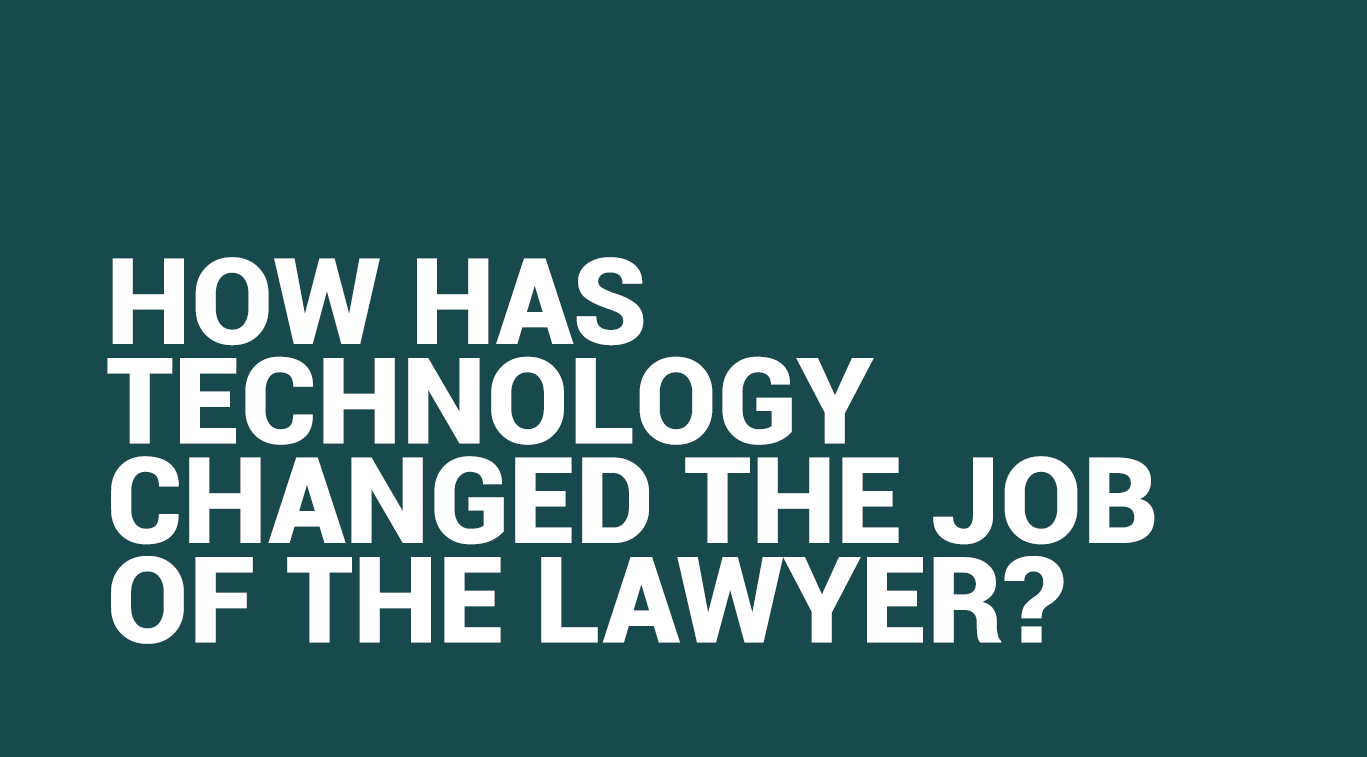Artificial intelligence, its types and applications

Written by Shrisha Sapkota
Blogger

Artificial intelligence (AI), the ability of a digital computer or computer-controlled robot to perform tasks commonly associated with intelligent beings[1]. The term is frequently applied to the project of developing systems endowed with the intellectual processes characteristic of humans, such as the ability to reason, discover meaning, generalise, or learn from experience[2]. Research in AI has focused chiefly on the following components of intelligence: learning, reasoning, problem-solving, perception and using language[3]. Machine Learning and Deep learning forms the core of Artificial Intelligence[4].
Less than a decade after breaking the Nazi encryption machine Enigma and helping the Allied Forces win World War II, mathematician Alan Turing changed history a second time with a simple question: “Can machines think?[5]“
Turing’s paper “Computing Machinery and Intelligence” (1950), and its subsequent Turing Test, established the fundamental goal and vision of artificial intelligence[6]. At its core, AI is the branch of computer science that aims to answer Turing’s question in the affirmative. It is the endeavor to replicate or simulate human intelligence in machines[7]. AI is an interdisciplinary science with multiple approaches, but advancements in machine learning and deep learning are creating a paradigm shift in virtually every sector of the tech industry[8].
Types of AI
Reactive Machines
The most basic types of AI systems are purely reactive and have the ability neither to form memories nor to use past experiences to inform current decisions[9]. Deep Blue, IBM’s chess-playing supercomputer, which beat international grandmaster Garry Kasparov in the late 1990s, is the perfect example of this type of machine[10]. Deep Blue can identify the pieces on a chessboard and know how each moves. It can make predictions about what moves might be next for it and its opponent and it can choose the most optimal moves from among the possibilities[11].
They emulate the human mind’s ability to respond to different kinds of stimuli but these machines do not have memory-based functionality[12]. This means such machines cannot use previously gained experiences to inform their present actions, i.e., these machines cannot “learn[13].” These machines could only be used for automatically responding to a limited set or combination of inputs[14].
That is the case with many machine learning models[15]. Machine learning is a branch of artificial intelligence (AI) and computer science which focuses on the use of data and algorithms to imitate the way that humans learn, gradually improving its accuracy[16]. Stemming from statistical math, these models were able to consider huge chunks of data, then produce a seemingly intelligent output[17]. For instance, it is extremely difficult (if not impossible) to write a math formula for movie recommendations but machine learning models were able to yield great results by looking at the purchase history of other customers[18]. Solving that problem became one of the factors behind Netflix’s success[19].
Limited Memory
Based on our understanding of the brain’s inner mechanisms, an algorithm was developed which was able to imitate the way our neurons connect[20]. One of the characteristics of deep learning is that it gets smarter the more data it is trained on[21]. Limited memory machines are machines that, in addition to having the capabilities of purely reactive machines, are also capable of learning from historical data to make decisions[22]. All present-day AI systems, such as those using deep learning, are trained by large volumes of training data that they store in their memory to form a reference model for solving future problems[23]. Deep learning algorithms and the deep learning revolution of 2012 made limited memory AI possible[24]. With limited memory AI, the AI environment is built so that models are automatically trained and then updated based on the model behaviour[25].
One notable example is Google’s AlphaStar project, which managed to defeat top professional players at the real-time strategy game StarCraft 2[26]. The models were developed to work with imperfect information and the AI repeatedly played against itself to learn new strategies and perfect its decisions[27]. Self-driving cars use limited memory AI because the algorithms that power these vehicles use data they were trained and programmed on to understand how to operate but can also interpret data it observes to read its environment and adjust when necessary[28]. The reaction time of autonomous vehicles improved significantly with limited memory AI, an important result that makes them safer on public roads[29].
While the previous two types of AI have been and are found in abundance, the next two types of AI exist, for now, either as a concept or a work in progress[30]. A theory of mind level AI will be able to better understand the entities it is interacting with by discerning their needs, emotions, beliefs and thought processes[31]. One real-world example of the theory of mind AI is Kismet. Kismet is a robot head made in the late 90s by a Massachusetts Institute of Technology researcher. Kismet can mimic human emotions and recognise them[32]. Sophia from Hanson Robotics is another example where the theory of mind AI was implemented[33]. Cameras present in Sophia’s eyes, combined with computer algorithms, allow her to see and she can sustain eye contact, recognise individuals and follow faces[34].
Emotion AI, currently under development, aims to recognise, simulate, monitor and respond appropriately to human emotion by analysing voice, image and other kinds of data[35]. But this capability, while potentially invaluable in advertising, customer service, healthcare and many other areas, is still far from being an AI possessing the theory of mind: The latter is not only capable of varying its treatment of human beings based on its ability to detect their emotional state but is also able to understand them[36].
One of the hurdles machines will have in achieving the theory of mind AI is that they would have to rapidly shift behaviour based on emotions to mimic how fluid this process is in human communication[37]. However, when this feat is accomplished it can open the door to robots supporting everyday tasks including providing human companionship[38].
Self-awarness
This is the final stage of AI development which currently exists only hypothetically[39]. Self-aware AI, which, self explanatorily, is an AI that has evolved to be so akin to the human brain that it has developed self-awareness[40].
This will be when machines are not only aware of the emotions and mental states of others, but also their own[41]. When self-aware AI is achieved we would have AI that has human-level consciousness and equals human intelligence with the same needs, desires and emotions[42].
And this is the type of AI that doomsayers of the technology are wary of[43]. Although the development of self-awareness can potentially boost our progress as a civilisation by leaps and bounds, it can also potentially lead to catastrophe[44].
Applications of AI
Every industry has a high demand for AI capabilities – including systems that can be used for automation, learning, legal assistance, risk notification and research. It has been said that AI “can redefine work or improve work conditions for humans and reduce the need for human contribution, input and interference during operation. It can help to assist or replace humans with smart technology in difficult, dirty, dull or dangerous work and even beyond.[45]”
Artificial intelligence (AI) has made its presence felt in the judicial system[46]. It enables judges to leverage special AI-powered tools to assist them in making decisions with almost 100% accuracy, free of human bias[47]. From self-driving cars to facial recognition software and programs that detect tumours, AI’s potential to serve our society is boundless[48]. The global Artificial Intelligence (AI) market size is expected to gain momentum by reaching USD 360.36 billion by 2028 while exhibiting a CAGR of 33.6% between 2021 to 2028[49]. IDC expects the media industry and federal and central governments will invest most heavily between 2018 and 2023 and predicts that AI will be “the disrupting influence changing entire industries over the next decade[50].”
Specific uses of AI in the industry include:
Healthcare
AI tools are helping designers improve computational sophistication in health care.
Health care experts see many possible uses for AI, including with billing and processing necessary paperwork[51]. And medical professionals expect that the biggest, most immediate impact will be in the analysis of data, imaging and diagnosis[52]. For example, Merantix is a German company that applies deep learning to medical issues which has an application in medical imaging that “detects lymph nodes in the human body in Computer Tomography (CT) images[53].”According to its developers, the key is labelling the nodes and identifying small lesions or growths that could be problematic[54]. Humans can do this, but radiologists charge $100 per hour and may be able to carefully read only four images an hour[55]. If there were 10,000 images, the cost of this process would be $250,000, which is prohibitively expensive if done by humans[56].
Moreover, a device, as common as a Fitbit or an iWatch, collects a lot of data like the sleep patterns of the individual, the calories burnt, heart rate and a lot more which can help with early detection, personalisation, even disease diagnosis[57].
Pharmaceuticals
Firms now use AI to manage the sourcing of materials and products from suppliers and to integrate vast troves of information to aid in strategic decision-making and because of its capacity to process data quickly, AI tools are helping to minimise the time in the pricey trial-and-error of product development a critical advance for an industry like pharmaceuticals, where it costs $1 billion to bring a new pill to market[58].
Businesses
Rather than hamper small businesses, the technology could give their owners detailed new insights into sales trends, cash flow, ordering and other important financial information in real-time so they can better understand how the business is doing and where problem areas might loom without having to hire anyone, become a financial expert, or spend hours labouring over the books every week[59].
Criminal Justice Systems
Because of human biases, variabilities and differences in opinion, many sentencing decisions can be skewed or impacted by unrelated factors, leading to unintentionally unjust outcomes[60]. For instance, one study discovered that judges were much more lenient in their sentencing decisions early in the morning and just after lunchtime[61].
New technologies make it possible to match images and voices with other types of information and to use AI on these combined data sets to improve law enforcement and national security[62]. Through its “Sharp Eyes” program, Chinese law enforcement is matching video images, social media activity, online purchases, travel records and personal identity into a “police cloud[63].” This integrated database enables authorities to keep track of criminals, potential law-breakers and terrorists[64].
One of the chief ways that AI is currently being used in this field is in systems called risk/needs assessment tools: algorithms that will use data about a defendant to analyse their risk of recidivism[65]. The higher the risk assessment, the more likely the criminal will repeat the crime[66]. Risk/needs assessment tools have been used for almost a century to try to reduce the number of incarcerated individuals who have a low risk of recidivism and to enable the justice system to effectively help and sentence individuals as productively as possible[67].
Banking
Artificial Intelligence enhances the speed, precision and effectiveness of human efforts[68]. In financial institutions, AI techniques can be used to identify which transactions are likely to be fraudulent, adopt fast and accurate credit scoring, as well as automate manually intense data management tasks[69]. One area where AI could “completely change the game” is lending, where access to capital is difficult in part because banks often struggle to get an accurate picture of a small business’s viability and creditworthiness[70]. Decisions about loans are now being made by software that can take into account a variety of finely parsed data about a borrower, rather than just a credit score and a background check[71].
Information opacity makes the lending process laborious and expensive for both would-be borrowers and lenders, and applications are designed to analyse larger companies or those who’ve already borrowed, a built-in disadvantage for certain types of businesses and historically underserved borrowers, like women and minority business owners[72].
But with AI-powered software pulling information from a business’s bank account, taxes and online bookkeeping records and comparing it with data from thousands of similar businesses, even small community banks will be able to make informed assessments in minutes, without the agony of paperwork and delays, and, like blind auditions for musicians, without fear that any inequity crept into the decision-making[73]
[1] https://www.britannica.com/technology/artificial-intelligence/Reasoning
[2] https://www.britannica.com/technology/artificial-intelligence/Reasoning
[3] https://www.britannica.com/technology/artificial-intelligence
[4] https://www.simplilearn.com/tutorials/artificial-intelligence-tutorial/types-of-artificial-intelligence
[5] https://builtin.com/artificial-intelligence
[6] https://builtin.com/artificial-intelligence
[7] https://builtin.com/artificial-intelligence
[8] https://builtin.com/artificial-intelligence
[9] https://www.govtech.com/computing/understanding-the-four-types-of-artificial-intelligence.html
[10] https://www.govtech.com/computing/understanding-the-four-types-of-artificial-intelligence.html
[11] https://www.govtech.com/computing/understanding-the-four-types-of-artificial-intelligence.html
[12] https://www.forbes.com/sites/cognitiveworld/2019/06/19/7-types-of-artificial-intelligence/
[13] https://www.forbes.com/sites/cognitiveworld/2019/06/19/7-types-of-artificial-intelligence/
[14] https://www.forbes.com/sites/cognitiveworld/2019/06/19/7-types-of-artificial-intelligence/
[15] https://www.techtarget.com/searchenterpriseai/tip/4-main-types-of-AI-explained
[16] https://www.ibm.com/nl-en/cloud/learn/machine-learning
[17] https://www.techtarget.com/searchenterpriseai/tip/4-main-types-of-AI-explained
[18] https://www.techtarget.com/searchenterpriseai/tip/4-main-types-of-AI-explained
[19] https://www.techtarget.com/searchenterpriseai/tip/4-main-types-of-AI-explained
[20] https://www.techtarget.com/searchenterpriseai/tip/4-main-types-of-AI-explained
[21] https://www.techtarget.com/searchenterpriseai/tip/4-main-types-of-AI-explained
[22] https://www.forbes.com/sites/cognitiveworld/2019/06/19/7-types-of-artificial-intelligence/
[23] https://www.forbes.com/sites/cognitiveworld/2019/06/19/7-types-of-artificial-intelligence/
[24] https://bernardmarr.com/what-are-the-four-types-of-ai/
[25] https://bernardmarr.com/what-are-the-four-types-of-ai/
[26] https://www.techtarget.com/searchenterpriseai/tip/4-main-types-of-AI-explained
[27] https://www.techtarget.com/searchenterpriseai/tip/4-main-types-of-AI-explained
[28] https://bernardmarr.com/what-are-the-four-types-of-ai/
[29] https://bernardmarr.com/what-are-the-four-types-of-ai/
[30] https://www.forbes.com/sites/cognitiveworld/2019/06/19/7-types-of-artificial-intelligence/
[31] https://www.forbes.com/sites/cognitiveworld/2019/06/19/7-types-of-artificial-intelligence/
[32] https://www.simplilearn.com/tutorials/artificial-intelligence-tutorial/types-of-artificial-intelligence
[33] https://www.simplilearn.com/tutorials/artificial-intelligence-tutorial/types-of-artificial-intelligence
[34] https://www.simplilearn.com/tutorials/artificial-intelligence-tutorial/types-of-artificial-intelligence
[35] https://www.techtarget.com/searchenterpriseai/tip/4-main-types-of-AI-explained
[36] https://www.techtarget.com/searchenterpriseai/tip/4-main-types-of-AI-explained
[37] https://bernardmarr.com/what-are-the-four-types-of-ai/
[38] https://bernardmarr.com/what-are-the-four-types-of-ai/
[39] https://www.forbes.com/sites/cognitiveworld/2019/06/19/7-types-of-artificial-intelligence/
[40] https://www.forbes.com/sites/cognitiveworld/2019/06/19/7-types-of-artificial-intelligence/
[41] https://bernardmarr.com/what-are-the-four-types-of-ai/
[42] https://bernardmarr.com/what-are-the-four-types-of-ai/
[43] https://www.forbes.com/sites/cognitiveworld/2019/06/19/7-types-of-artificial-intelligence/
[44] https://www.forbes.com/sites/cognitiveworld/2019/06/19/7-types-of-artificial-intelligence/
[45] “Statement on Artificial Intelligence, Robotics and ‘Autonomous’ Systems”, European Group on Ethics and Science and New Technologies, European Commission, March 2018.
[46] https://pixelplex.io/blog/artificial-intelligence-criminal-justice-system/
[47] https://pixelplex.io/blog/artificial-intelligence-criminal-justice-system/
[48] https://pixelplex.io/blog/artificial-intelligence-criminal-justice-system/
[49]https://www.globenewswire.com/news-release/2021/09/16/2298078/0/en/Artificial-Intelligence-AI-Market-to-Hit-USD-360-36-Billion-by-2028-Surging-Innovation-in-Artificial-Internet-of-Things-AIoT-to-Augment-Growth-Fortune-Business-Insights.html
[50] https://news.harvard.edu/gazette/story/2020/10/ethical-concerns-mount-as-ai-takes-bigger-decision-making-role/
[51] https://news.harvard.edu/gazette/story/2020/10/ethical-concerns-mount-as-ai-takes-bigger-decision-making-role/
[52] https://news.harvard.edu/gazette/story/2020/10/ethical-concerns-mount-as-ai-takes-bigger-decision-making-role/
[53] https://www.brookings.edu/research/how-artificial-intelligence-is-transforming-the-world/
[54] https://www.brookings.edu/research/how-artificial-intelligence-is-transforming-the-world/
[55] https://www.brookings.edu/research/how-artificial-intelligence-is-transforming-the-world/
[56] https://www.brookings.edu/research/how-artificial-intelligence-is-transforming-the-world/
[57] https://techvidvan.com/tutorials/artificial-intelligence-applications/
[58] https://news.harvard.edu/gazette/story/2020/10/ethical-concerns-mount-as-ai-takes-bigger-decision-making-role/
[59] https://news.harvard.edu/gazette/story/2020/10/ethical-concerns-mount-as-ai-takes-bigger-decision-making-role/
[60] https://pixelplex.io/blog/artificial-intelligence-criminal-justice-system/
[61] https://pixelplex.io/blog/artificial-intelligence-criminal-justice-system/
[62] https://www.brookings.edu/research/how-artificial-intelligence-is-transforming-the-world/
[63] https://www.brookings.edu/research/how-artificial-intelligence-is-transforming-the-world/
[64] https://www.brookings.edu/research/how-artificial-intelligence-is-transforming-the-world/
[65] https://pixelplex.io/blog/artificial-intelligence-criminal-justice-system/
[66] https://pixelplex.io/blog/artificial-intelligence-criminal-justice-system/
[67] https://pixelplex.io/blog/artificial-intelligence-criminal-justice-system/
[68] https://www.sas.com/nl_nl/insights/analytics/what-is-artificial-intelligence.html
[69] https://www.sas.com/nl_nl/insights/analytics/what-is-artificial-intelligence.html
[70] https://news.harvard.edu/gazette/story/2020/10/ethical-concerns-mount-as-ai-takes-bigger-decision-making-role/
[71] https://www.brookings.edu/research/how-artificial-intelligence-is-transforming-the-world/
[72] https://news.harvard.edu/gazette/story/2020/10/ethical-concerns-mount-as-ai-takes-bigger-decision-making-role/
[73] https://news.harvard.edu/gazette/story/2020/10/ethical-concerns-mount-as-ai-takes-bigger-decision-making-role








